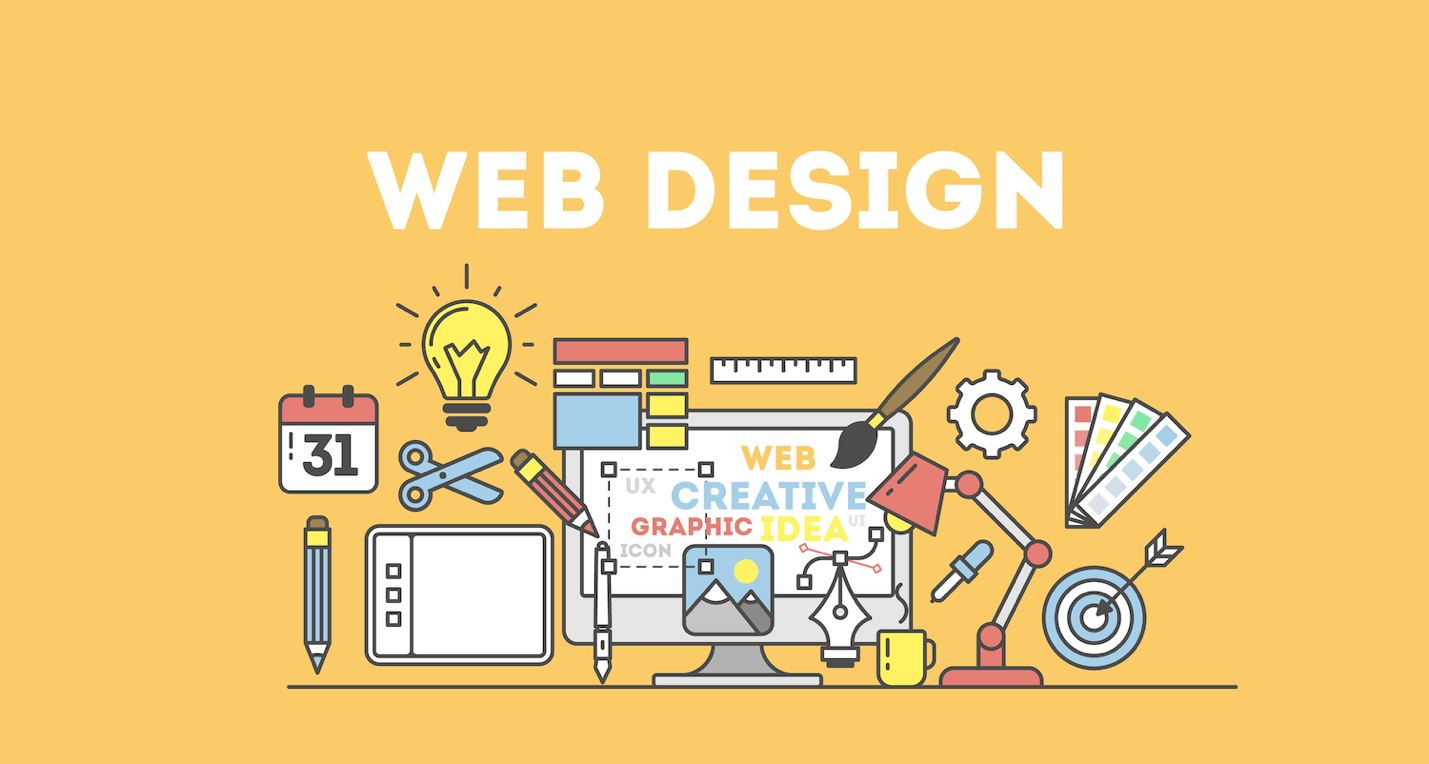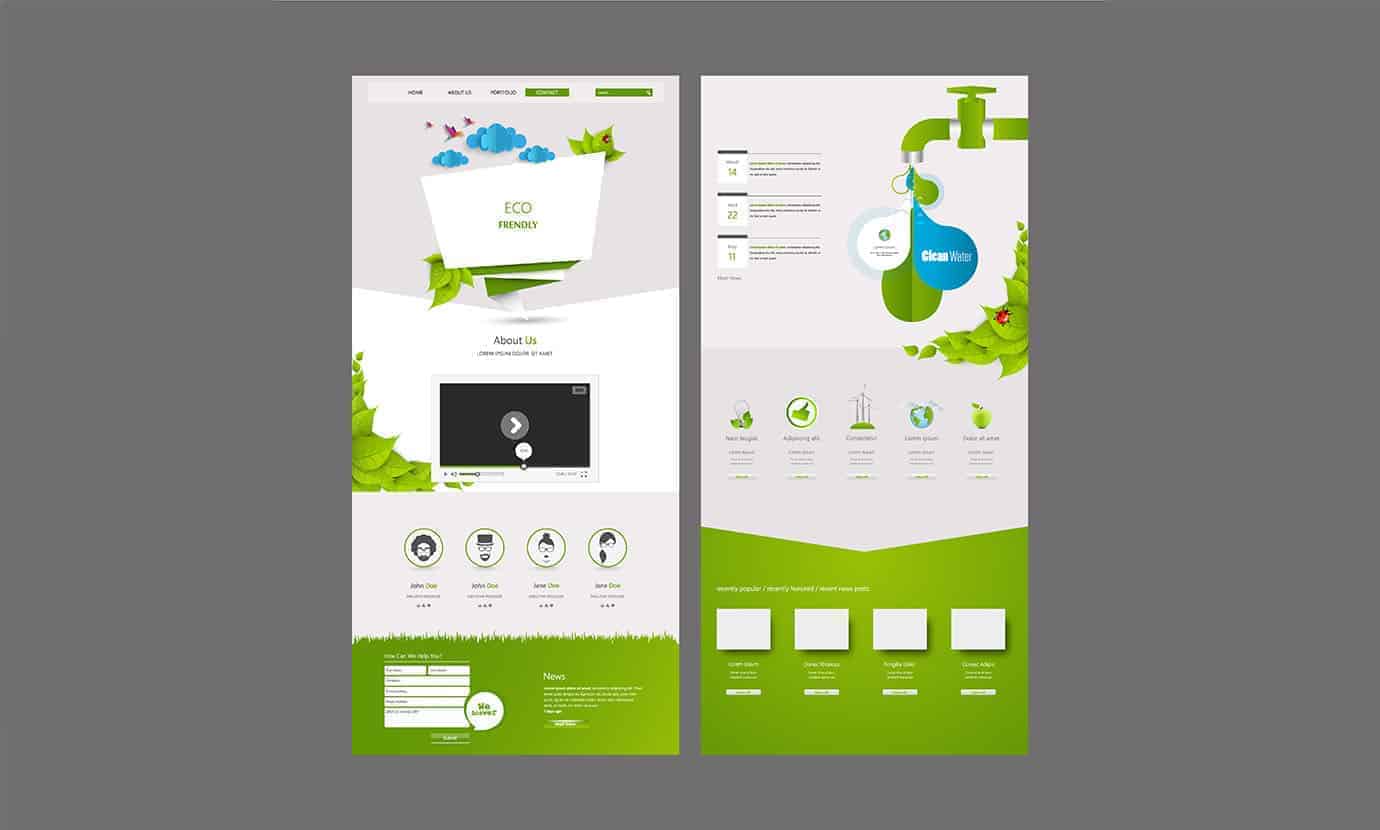Website Design Strategies to Ensure Your Site is Visually Appealing and User-Friendly
Website Design Strategies to Ensure Your Site is Visually Appealing and User-Friendly
Blog Article
Modern Web Site Design That Records Interest and Converts
In a significantly digital landscape, contemporary internet site layout has emerged as an essential consider catching individual attention and driving conversions. By purposefully employing visual pecking order, receptive layouts, and involving interactive components, developers can develop experiences that not just attract visitors however likewise assist in purposeful communications. Efficient call-to-action approaches play an important function in guiding customers towards preferred outcomes. As we discover these crucial components, it comes to be clear that comprehending their interplay can significantly affect a site's efficiency and individual satisfaction. What are the crucial elements that genuinely make a difference?
Importance of Visual Hierarchy
Aesthetic power structure is a critical component in web site layout, as it guides individuals' focus and improves their overall experience. By tactically arranging material, developers can direct customers to the most important info first, consequently boosting engagement and improving functionality.
Including a rational circulation in content arrangement is vital; for instance, putting one of the most essential details on top of a page cultivates prompt recognition. Constant use of typography, such as differing font dimensions and designs, helps develop a clear web content framework. This company not only help in navigating yet also builds trust fund, as individuals really feel a lot more comfortable when they can quickly locate what they are searching for.
Eventually, a well-executed visual pecking order not only improves aesthetic allure yet likewise considerably affects customer actions. By prioritizing essential components and making certain a smooth experience, developers can successfully convert site visitors into consumers, strengthening the significance of this foundational style principle in modern-day web site advancement.
Responsive Design for All Devices
Creating a seamless experience across various devices is vital in today's digital landscape, where users accessibility internet sites from mobile phones, desktops, and tablets alike. Responsive layout is a crucial strategy that guarantees websites adapt fluidly to different display resolutions, orientations, and sizes. By utilizing flexible grids, photos, and CSS media questions, developers can create designs that maintain aesthetic honesty and performance, no matter the device being used.
The importance of responsive design prolongs past aesthetic appeals; it directly impacts customer engagement and conversion prices. A web site that works well on all gadgets motivates longer brows through and decreases bounce prices, as individuals are much more likely to interact with web content that is easy to navigate. In addition, internet search engine, specifically Google, focus on mobile-friendly sites in their positions, making responsive style a crucial part of search engine optimization (SEO)
Incorporating responsive layout not only boosts customer experience however also simplifies the advancement procedure. By creating a solitary site that works across tools, companies can conserve time and resources contrasted to establishing different mobile and desktop variations. Inevitably, receptive style is an essential approach for modern-day web site style, making certain access and contentment for all customers, no matter of their device.
Engaging Interactive Aspects
While a responsive layout lays the foundation for a useful web site, including appealing interactive aspects is important for catching customer focus and promoting much deeper links. Website Design. Interactive components, such as animations, tests, and clickable infographics, produce an extra vibrant customer experience, urging site visitors to invest even more time on the site
Incorporating interactive attributes can also direct customers through complicated info, making it much easier to digest content. For instance, interactive sliders can illustrate product variations, while embedded videos can supply demonstrations or testimonies that reverberate greater than fixed pictures or text. Furthermore, gamification methods, like incentives for engaging or finishing tasks with content, can boost customer inspiration and retention.
Reliable use of interactive elements not just enhances the individual experience however can also lead to higher conversion prices. It is crucial to balance interactivity with performance; extremely intricate attributes might hinder site rate, negatively affecting individual fulfillment.
Structured Navigating Practices
Effective navigation is a cornerstone of any type of successful website, as it straight affects individual experience and material accessibility. Structured navigating methods Discover More make sure that individuals can quickly locate details, boosting their interaction with the site. A well-structured navigation food selection should be instinctive and easy, commonly including a minimal number of main groups to prevent overwhelming site visitors.
To accomplish structured navigation, developers must prioritize an ordered framework that rationally organizes web content. Executing breadcrumb tracks can give individuals with context regarding their existing location within the site, enabling seamless backtracking. Additionally, using drop-down food selections can effectively conserve room while still giving accessibility to subcategories.
Receptive style is crucial, as navigating should be useful throughout all gadgets (Website Design). Mobile individuals, particularly, take advantage of touch-friendly food selections and retractable areas that preserve usability without jeopardizing appearances

Effective Call-to-Action Techniques
A well-crafted call-to-action (CTA) is necessary for guiding customers towards preferred results on a site, as it motivates them to involve with content or purchase. To optimize their performance, CTAs must be clear, engaging, and strategically positioned throughout the website.
First, utilize action-oriented language that communicates necessity or worth, such as "Start," "Join Currently," or "Claim Your Discount." This language not only motivates customers however likewise establishes clear expectations about the next actions.
2nd, take into consideration style aspects; CTAs need to stick out visually through contrasting shades, adequate whitespace, and noticeable positioning. A button that is very easy to see and click rises the probability of individual interaction.
Additionally, personalizing CTAs based on user habits or demographics can significantly improve engagement. Tailored messages reverberate extra with users, driving higher conversion prices.

Verdict
Finally, modern-day site style highlights the integration of visual power structure, responsive layouts, engaging interactive elements, structured navigating, and efficient call-to-action methods. These parts jointly enhance customer experience, making certain that site visitors remain engaged and motivated to explore content further. By prioritizing these style concepts, organizations can considerably improve user retention and conversion rates, ultimately resulting in better success in the electronic landscape. The continual evolution of website design underscores its crucial duty in effective on-line interaction and advertising.
In a progressively digital landscape, modern internet site layout has emerged as a critical variable in capturing customer focus and driving conversions.Visual power structure is an important component in read this article site style, as go to this web-site it guides individuals' interest and boosts their total experience.The relevance of responsive design extends past looks; it straight affects user interaction and conversion prices.Integrating receptive design not only boosts individual experience yet also simplifies the growth procedure. Eventually, receptive layout is an essential technique for modern web site design, ensuring ease of access and contentment for all individuals, no matter of their tool.
Report this page